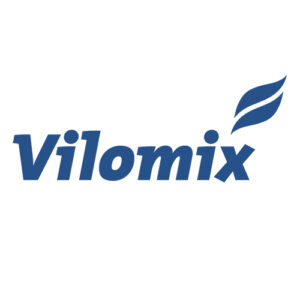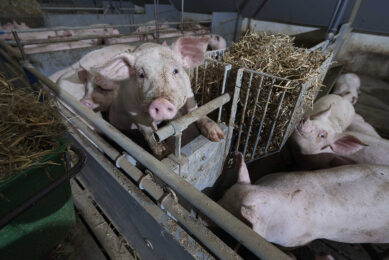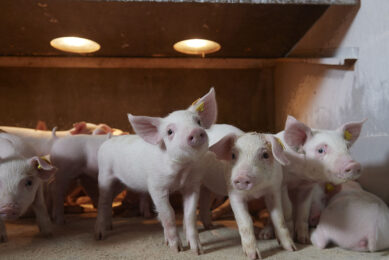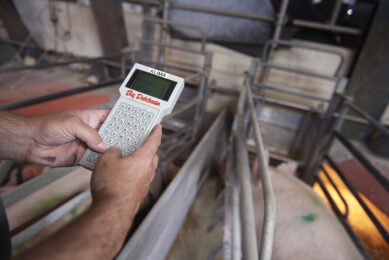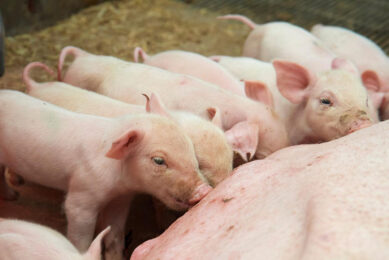Feed the boars for top reproductive performance
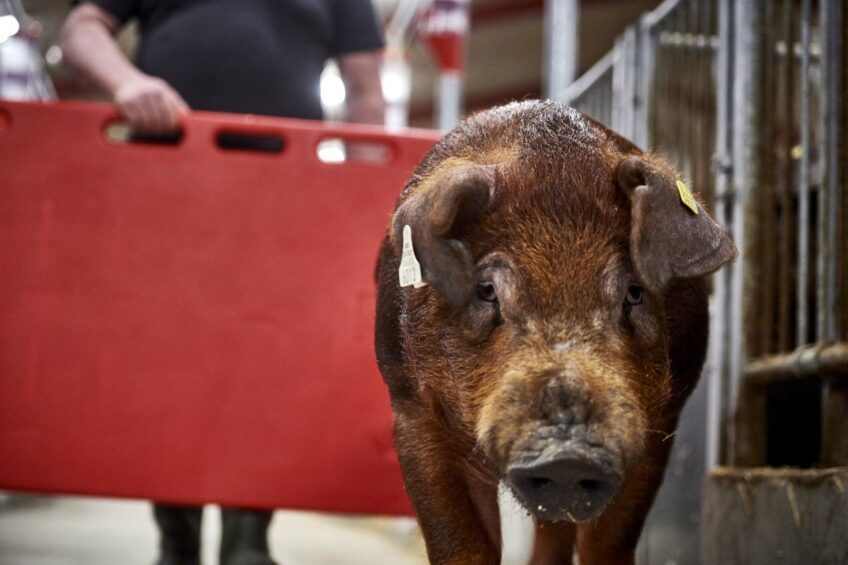
A well-balanced feed strategy is critical to the quantity and quality of boar semen – and the future of the herd.
Boars are the smallest and perhaps the most overlooked group in pig production. Yet their semen has a critical influence on the overall performance of the herd, including the size of the individual litter. Genetics, housing conditions, semen collection management, and, particularly, the feed rank are among the key factors that ensure semen volume and quality.
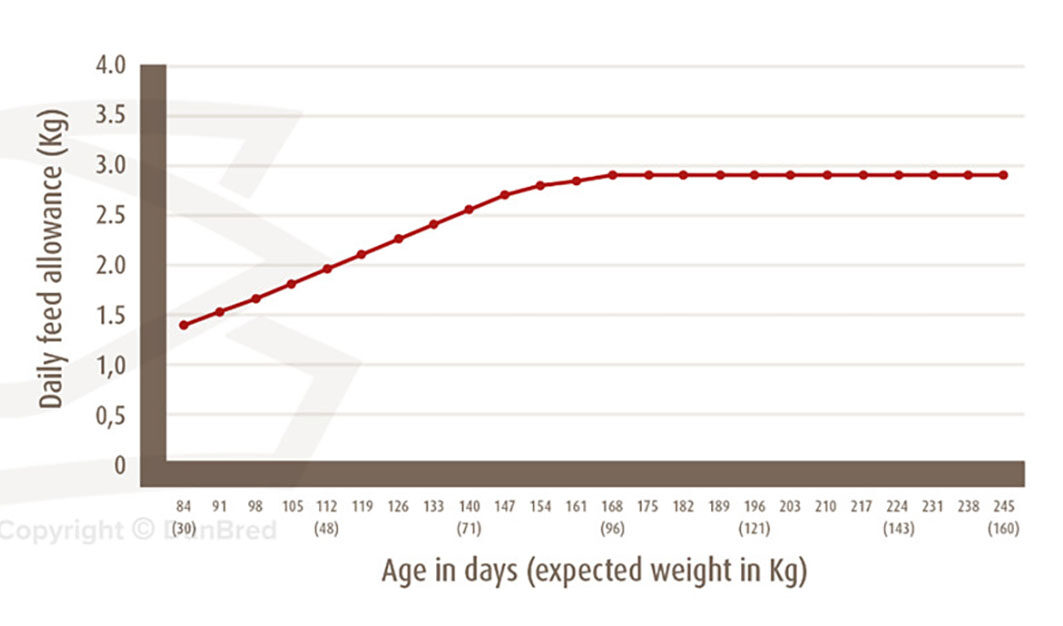
In an optimum feeding strategy, the amount and composition of the feed must account for the needs of the boar at each stage of its life. The objective is to ensure boar activity and libido and, subsequently, the development and motility of sperm.
During the growing period, boars have similar nutrient needs to gilts, which means feeding can be ad libitum feeding from 30-60kg. Up to a weight of 105kg, feed should be limited to 2.9kg a day to prevent unwanted lean meat growth and to improve leg strength. From then on, daily feed should be regulated according to body condition. The optimal daily gain level is 750-800g from 30-140kg of weight.
In ad libitum feeding systems, energy density and lysin level of feed could be lowered by 5-7%.
A rule of thumb is that sexually mature boars have the same nutrient requirements as gestating sows – a feed level of 2.5 to 3.2 kg feed per day depends on body condition. Daily feed rations should, however, be supplemented with an extra 100g for each jump and for every degree below 20°C in the barn.
Sufficient amounts of fibres should be included in the boar ration to ensure gut health and satiety.
Balancing energy and protein
At all times, the best results rely on the farmer’s ability to find the right balance. While the energy and protein level of the feed must be high enough to optimise reproductive performance, excessive amounts are likely to lead to obesity, reduced leg strength and a decline in the quantity and quality of semen. By the same token, insufficient feed leads to energy deficiency and impaired spermatogenesis.
In a feeding study, Kemp et al. (1989) demonstrated the impact of various feed strategies on breeding boars. Over 12 weeks, the boars were fed ad libitum or at medium or low levels. By the final 2 weeks, the boars fed on low levels (1.92 kg/day) produced significantly fewer sperm cells than the boars on high and medium-level feeding.
Vitamin and mineral supplementation
With regard to vitamin and mineral addition, a farrowing or pregnancy mixture will also meet the needs of the boar. In 2004, I Audet et al. investigated the impact of vitamin supplements on semen quality. Although the study found limited transfer of vitamins from blood to seminal plasma, there were indications that supplementation with both water-soluble and fat-soluble vitamins increases semen production during intensive collection.
One of the water-soluble vitamins currently not added to standard boar feed is vitamin C. Various trials have shown, however, that vitamin C may have a positive effect on sperm concentration and reduce the number of deformed sperm. Further studies are required to confirm this tendency and its underlying mechanisms of action.
Concerning mineral addition, investigations have largely focused on zinc and selenium, which both have an influence on sperm quality. Zinc directly affects spermatogenesis and the maturation of testosterone-producing Leydig cells in the testes. Selenium is a component of the antioxidant enzyme glutathione peroxidase, which acts on the peroxides that would otherwise break down cell membranes in the body.
Quality and safety monitoring
In addition to balancing the nutrient content of the feed, attention should be paid to the consistent quality and safety standards of feed raw materials in general. Unwanted substances such as mycotoxins, for example, should be carefully monitored. Particularly zearalenone and aflatoxin B1 have been shown to have a negative effect on semen production and fertility.
Finally, when the nutritional content is in balance, producers must be sure to maintain optimal indoor conditions. A well-adjusted microclimate and sufficient water supply are fundamental for top reproductive performance.


